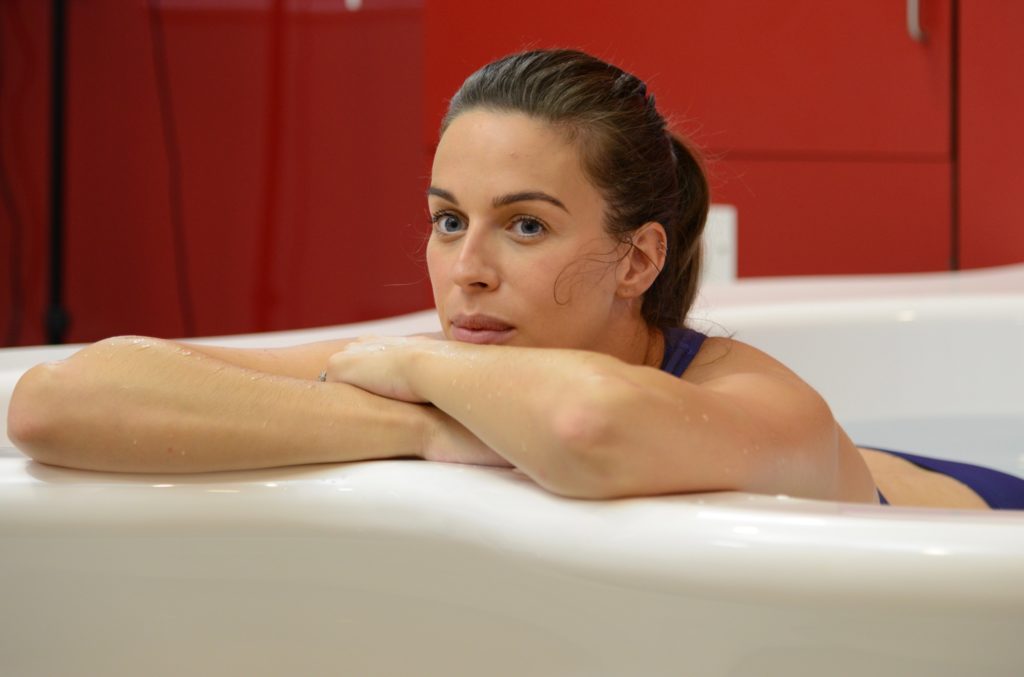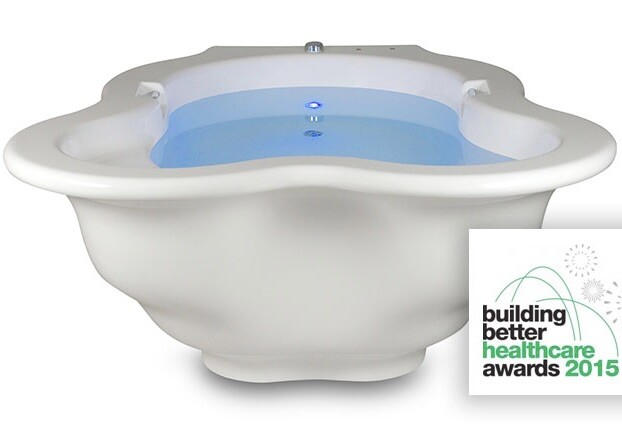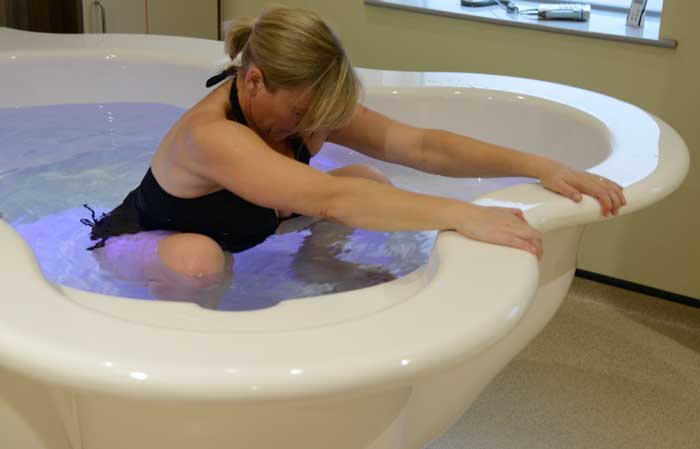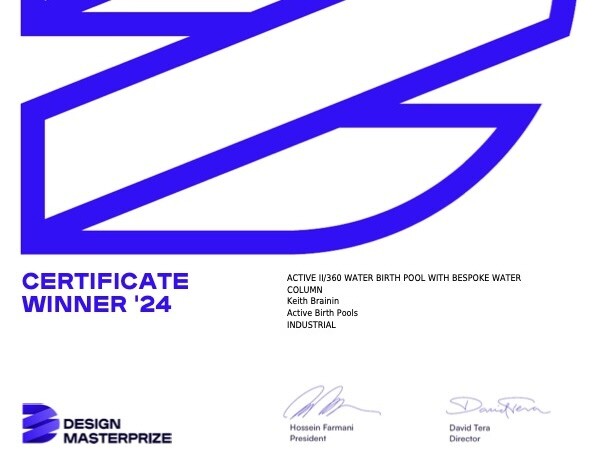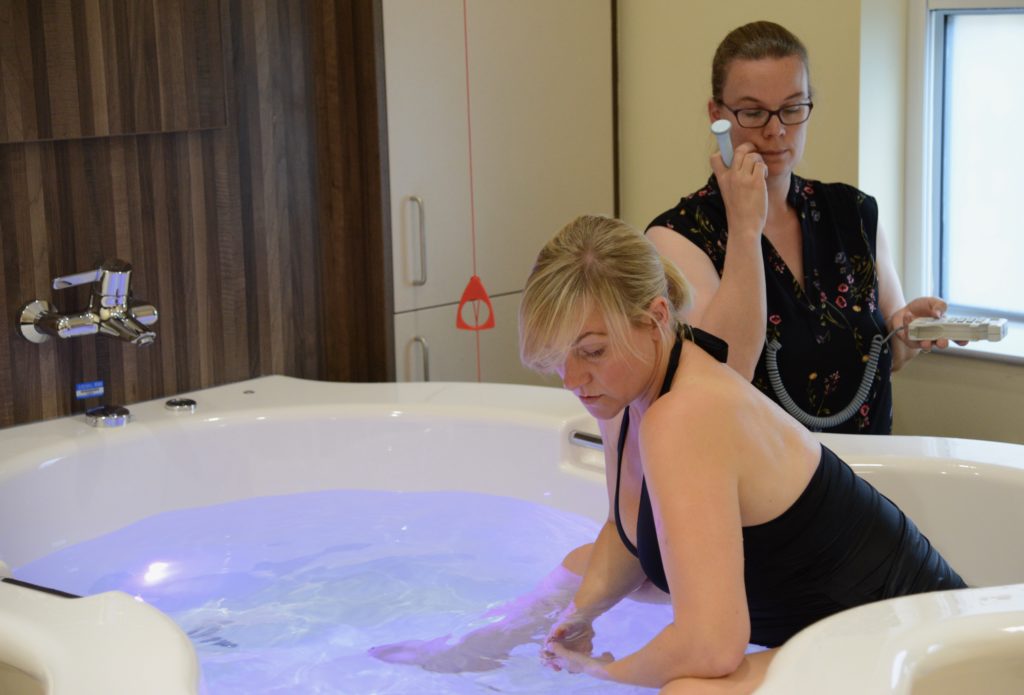Purchasing a water birth pool is a big responsibility.
Not only must financial considerations be taken into account, but more importantly Health and Safety risks.
There are other manufacturers who produce water birth pools that are safe but, many water birth pools are equipped with features that at first might seem safe or even an advantage, but in reality present risks or breach regulations.
These water birth pools (mainly produced in Europe) are over engineered and equipped with a profusion of fittings and features that put mothers and midwives at risk.
(We’re not showing images of other birth pools to illustrate the points below as this could be contentious.)
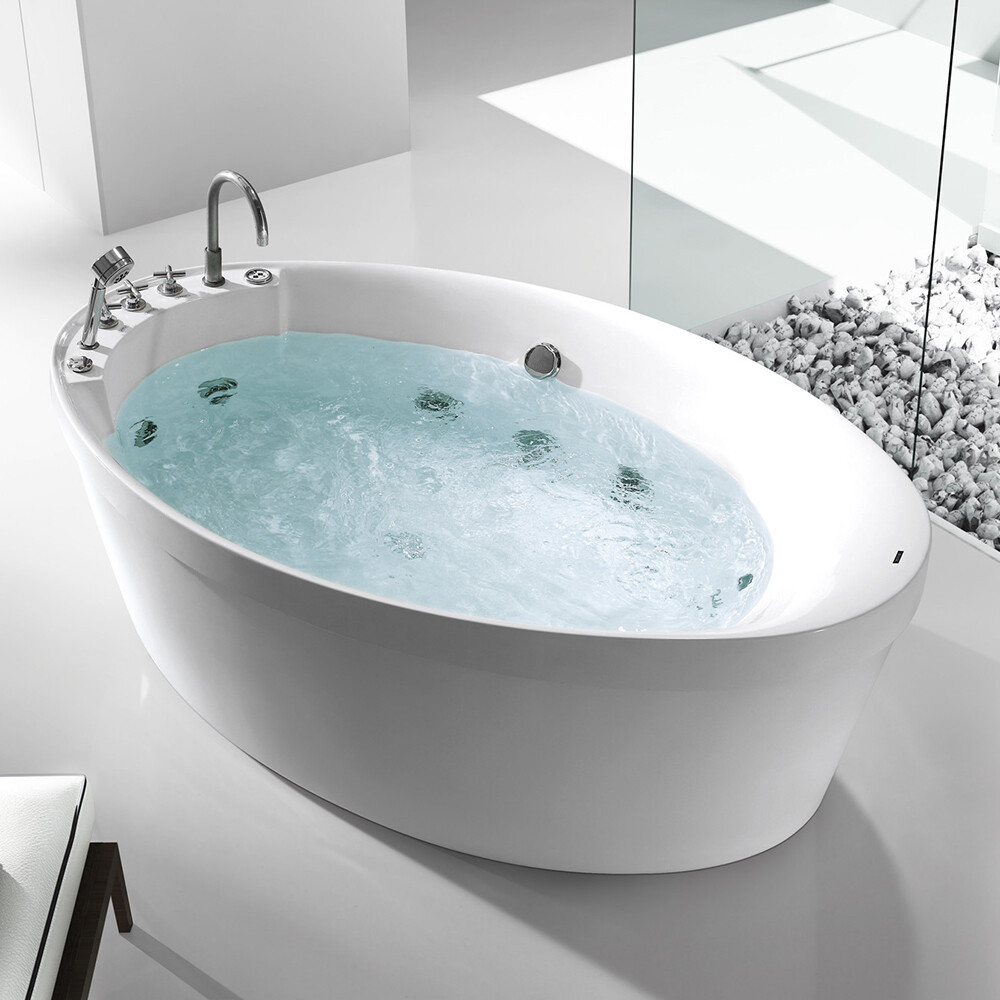
This whirlpool bath clearly shows a large number of unsafe fittings and systems as applied to water birth pools.
Note the overflow drain, recirculating water system, Swan neck tap, integral shower, rim mounted plumbing and controls
Because they are mounted on the pool, close to the water the potential for pool mounted fixtures and fittings to become contaminated with bacteria and cross infect is greatly increased.

Rim Mounted Taps and Spouts
Rim mounted taps, spouts and showers are one the biggest Health and Safety risks
These fittings present a serious infection control risk as the space between the surface of the pool and the fitting is a suitable breeding ground for bacteria.
Remember – bacteria are microscopic – even though the fitting may appear flush to the surface of the pool there is space for micro-organisms to establish themselves.
The risk that bacteria will propagate in the moisture between the plate and the rim is unacceptable.
There is also a risk that rim mounted taps could be contaminated with water from the pool and flow back into the tap.
There is the potential for back contamination of the tap, with bacterial colonisation into the system in contravention of water fitting regulations
Taps and spouts for water birth pools should be wall mounted 25cm above the pool and fitted with back flow protection as shown in the photo of the Active II Water Birth Pool below:

Surface Mounted Hand Grips (internal and rim mounted)
Surface mounted handgrips are a serious infection control and manual handling risk.
Some water birth pools feature surface mounted hand grips similar to the ones shown above.
The is great potential for bacteria to become established between the fitting and the pool which makes these fittings an unacceptable infection control risk.
The risk of cross-infection is dramatically increased with surface mounted metalwork that is inside the pool as they come into direct contact with the water while the mother is using the pool.
From a manual handling perspective these handgrips are dangerous as they form an obstruction that mothers can hurt themselves on and they interfere with movement around the pool.

Swan Neck Taps
Swan neck taps are often seen mounted on the rims of water birth pools. Though attractive this type of tap presents a significant infection control risk.
Swan neck taps retain larger volumes of water which then stagnates and HFN 30 and HPSC recommends that swan-neck taps should not be used.
This is because they do not empty after use and could be prone to microbial biofouling with microorganisms including Legionella and P. aeruginosa the latter of which was associated with a swan neck tap during the neonatal outbreak in Northern Ireland (HPSC, 2015).
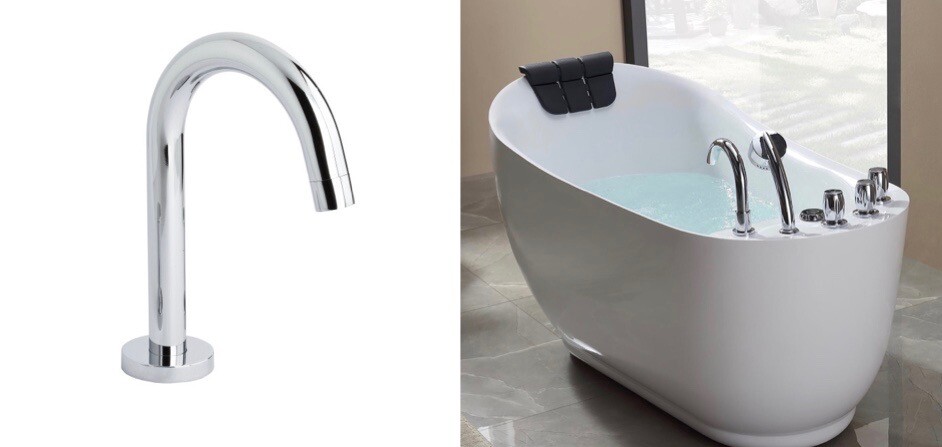
Re-circulating water systems
Re-circulating or pumped systems with jets such as whirlpools and jacuzzi present the perfect conditions for the growth of micro-organisms.
Water systems like these present the highest levels of risk as they produce aerosols.
Aerosols are generated when the water surface is broken – for example, by falling water droplets, splashing, or by bubbles breaking at the surface.
Once introduced to these systems, Legionella and Pseudomonas thrive and can become aerosolised and then inhaled.
Integral Plumbing Systems
Plumbing systems like these utilise flexible and non-flexible piping, overflow drains, handheld showers, pumps, hoses, heaters, surface mounted fittings and filters.
These systems are impossible to clean, disinfect or monitor and therefore present an extremely high Infection Control Risk.
Stagnant water within the system is an ideal breeding ground for bacteria.
UK regulations state that water birth pools fitted with thermostatically controlled mixer taps plumbed directly into the hospitals water supply.
Hand held showers
Handheld showers present a significant infection control risk.
If the shower head falls in the pool it may be contaminated with bacteria that could breed and be passed on next time the shower is used.
Department of Health regulations clearly stipulate that handheld showers and bath/shower mixers are not installed for use with water birth pools as they present a Fluid Category 5 risk to the mains water supply.
N.B. There are systems available that enable you to detach the hose and shower head from the tap. These are permissible as long as the shower fittings are detached when the pool is in use and only employed afterwards for cleaning.
Integral Plumbing Systems
Plumbing systems like these utilise flexible and non-flexible piping, overflow drains, handheld showers, pumps, hoses, heaters, surface mounted fittings and filters.
These systems are impossible to clean, disinfect or monitor and therefore present an extremely high Infection Control Risk.
Stagnant water within the system is an ideal breeding ground for bacteria.
UK regulations state that water birth pools should be filled with wall mounted, thermostatically controlled mixer taps plumbed directly into the hospitals water supply.
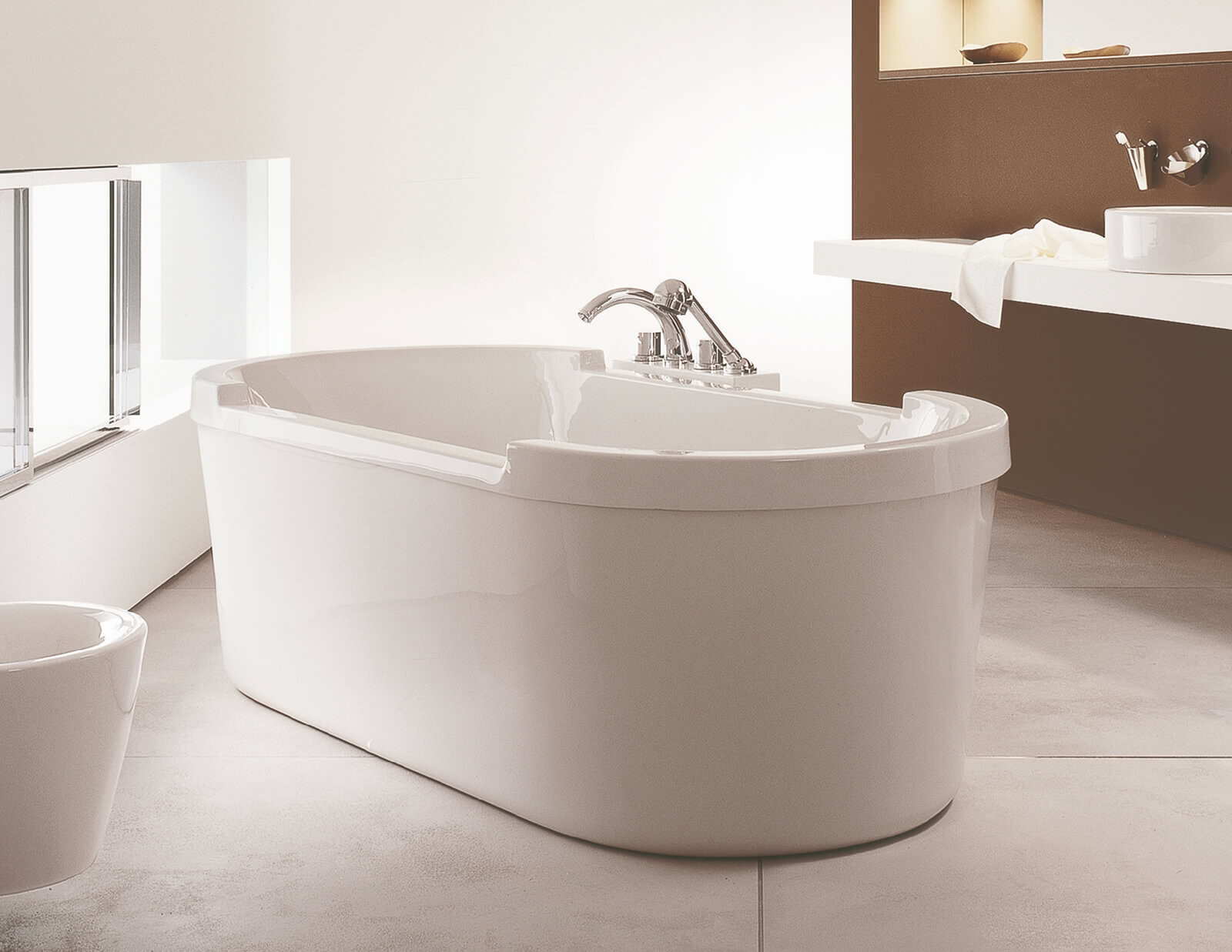
Pumped heating systems
Heating systems for water birth pools are not necessary and present unacceptable infection control risks.
Water is pumped through a heat exchanger and then back into the pool creating the ideal environment for bacteria to breed.
These systems present one of the highest infection control risks and should not be utilised.
Bacteria filters and disinfection systems
Some water birth pools are equipped with these devices in an attempt to mitigate the risk of infection and bacteria infestation that are inherent in built-in plumbing systems.
Bacteria filters and disinfection systems can not be relied upon and will not guarantee adequate hygiene standards.
Overflow drains
Overflow drains harbour bacteria and can serve as a conduit for cross infection.
Regulations are very clear on this point.
Overflow drains should not be fitted to water birth pools as they constitute a constant infection control risk.

Surface mounted metalwork
Metalwork such as grab rails, taps and handles are an obstacle that comes between mother and midwife.
These fittings ALL present a serious infection control risk as the space between the surface of the pool and the fitting are perfect for bacteria.
Remember – bacteria are microscopic – even though the fitting may appear flush to the surface of the pool there is space for bacteria!
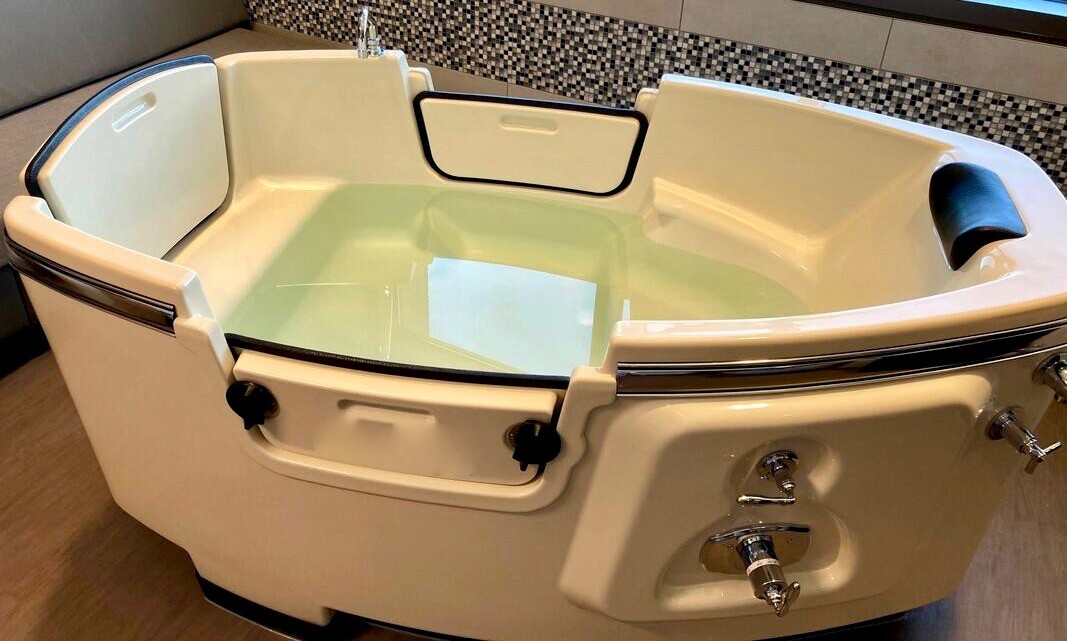
Doors
There is no reason for a water birth pool to have a door and many reasons why they should not.
Doors are mistakenly used for two reasons:
- To facilitate emergency evacuations
- To help mothers get in and out of the pool
Doors present an extremely high risk of infection and should be banned from use in water birth pools for this reason alone.
The door seal (typically foam or rubberised material) is the perfect breeding ground for bacteria.
From manual handling perspective doors are not practical or fit for purpose.
They actually complicate emergency evacuations and put mothers and midwives at risk.
Active Birth Pools: Water Safety, Hygiene and Infection Control

